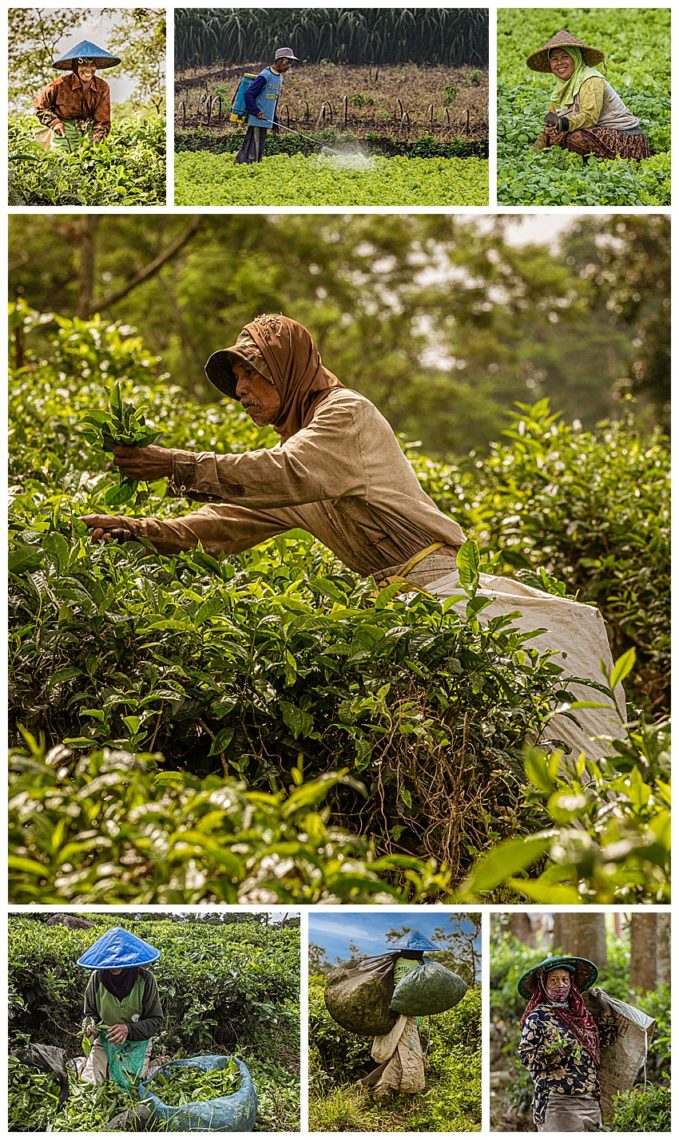
The rural areas surrounding Malang, Java are quite picturesque, so we had an opportunity to work on photographing landscapes. One stop was to the Wonosari Tea Plantation, located on the slopes of Mount Arjuna in East Java. It is the oldest tea plantation in East Java and the government operates this as an Agro-Tourism site, to bring in visitors for the purpose of educating the public about organic agriculture and provide visitors an opportunity to reconnect with the land. We saw scores of school age children, and the site has its own tourist train to take visitors around the large plantation. The tea plantation workers are distant and quite hard to locate, and the train does not stop where the workers are. Therefore, we hired the entire train for the four of us, and had them stop when things looked interesting. (The cost of renting the entire train was roughly $7 USD…!)
Java tea is mainly used for export, and some claim that it is used as a medicine for bladder and kidney infections. Organic Java Tea is only available from Java, and is grown in areas of rich volcanic soil. All over Indonesia, tea picking is considered women’s work. This process is still done manually. There are 15 teams of 4 people each on this tea plantation who earn $40 each, on a good month.
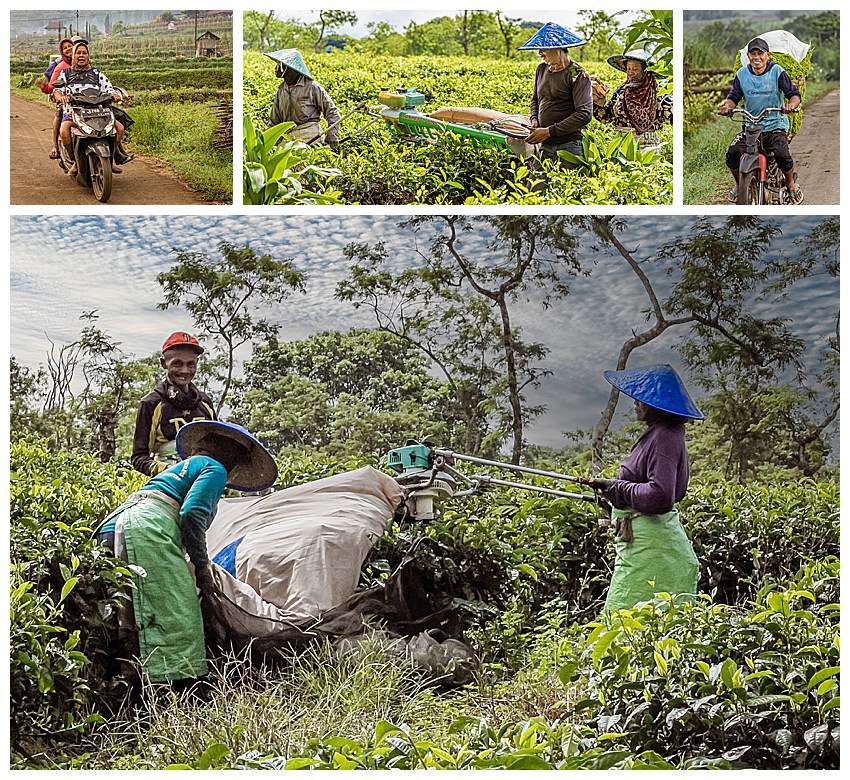
There was only one piece of mechanized equipment that we saw that day. The “factory” (which is what the workers we spoke to, called the company that hires them) has supplied a single experimental mechanical cutting machine which clips the top leaves off. These leaves are collected into a bag, and one member then sorts through the best leaves that were harvested.
The cutting machine is rotated and shared by the 15 teams.
A 36 second video clip showing the machine for harvesting tea leaves. It requires a team of four workers to manage the entire machine process, and they make “up to $50 per month” each on a good month.
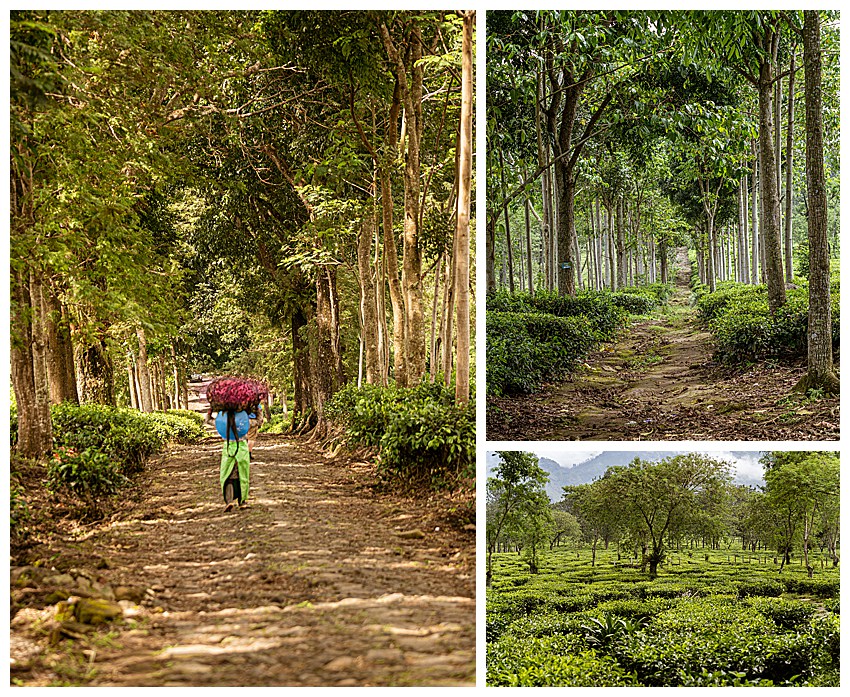
The rural areas of East Java are quite picturesque with tree lined dirt roads and agricultural fields.
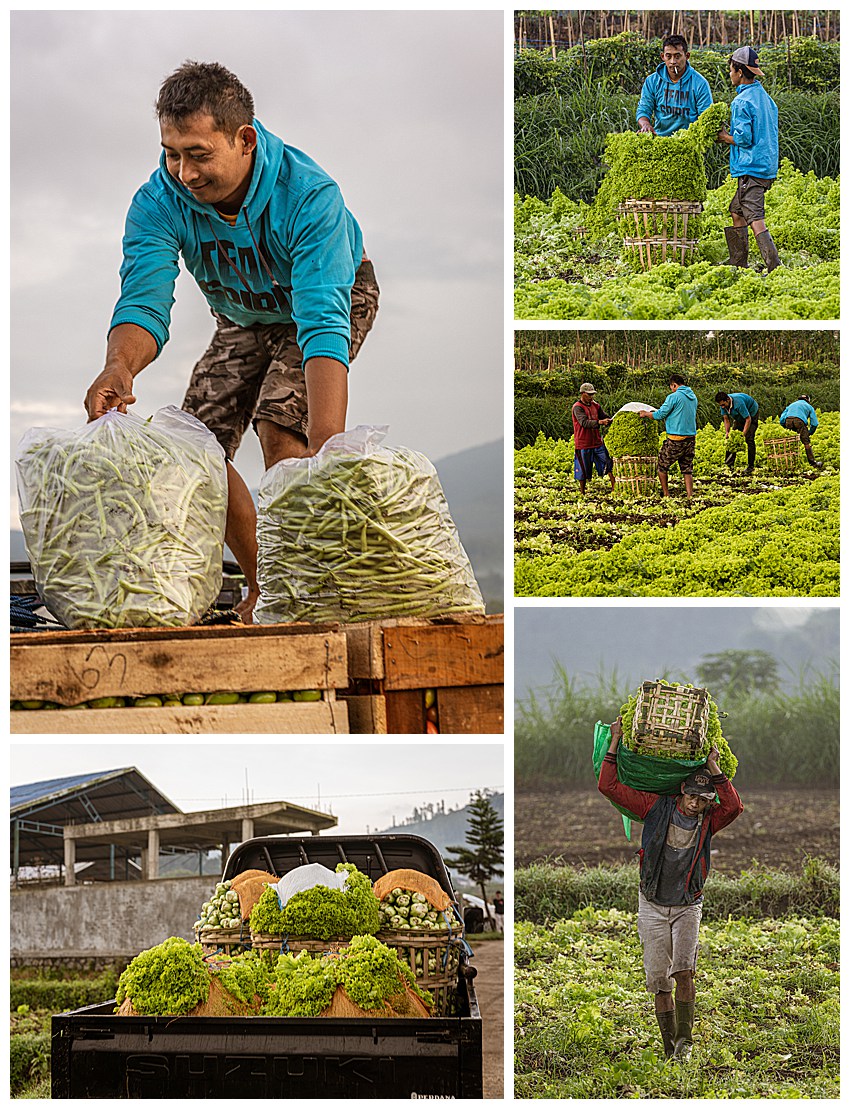
As we were driving along a rural road, we saw a small group of people harvesting lettuce, and stopped to talk to them and grab some photographs. The lettuce and other vegetables are harvested early in the morning, mostly by men. The farms mostly rely on manual labor to get their crops harvested.
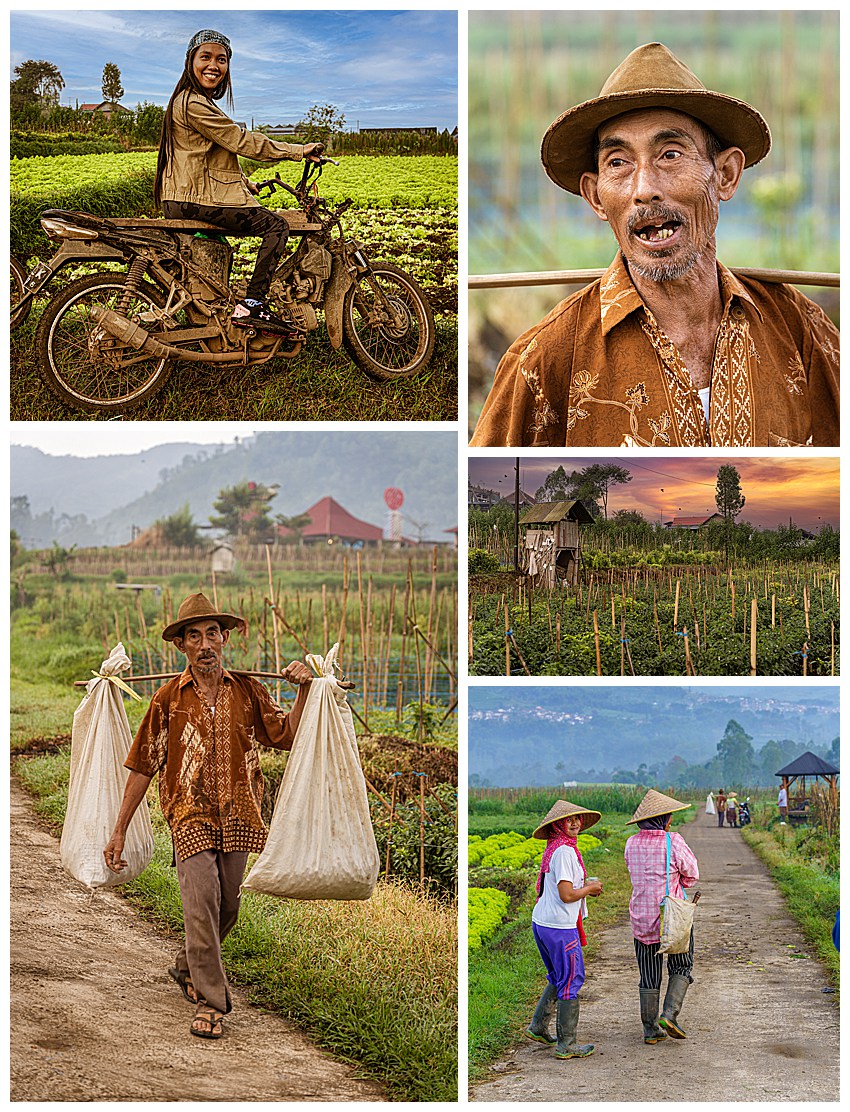
Almost all the farmers got to their assigned location in the fields by motorcycle, usually riding 2-3 workers per bike. We were intrigued how some of the motorcycles were obviously built by hand, using salvaged parts, and seats of wood (top-left, with Vina, our companion and model).
One older man was walking down the path with two bags over his shoulder (bottom-left). When we asked if he worked the fields, he replied that no, he actually lived on the hill in the middle of the lettuce field.
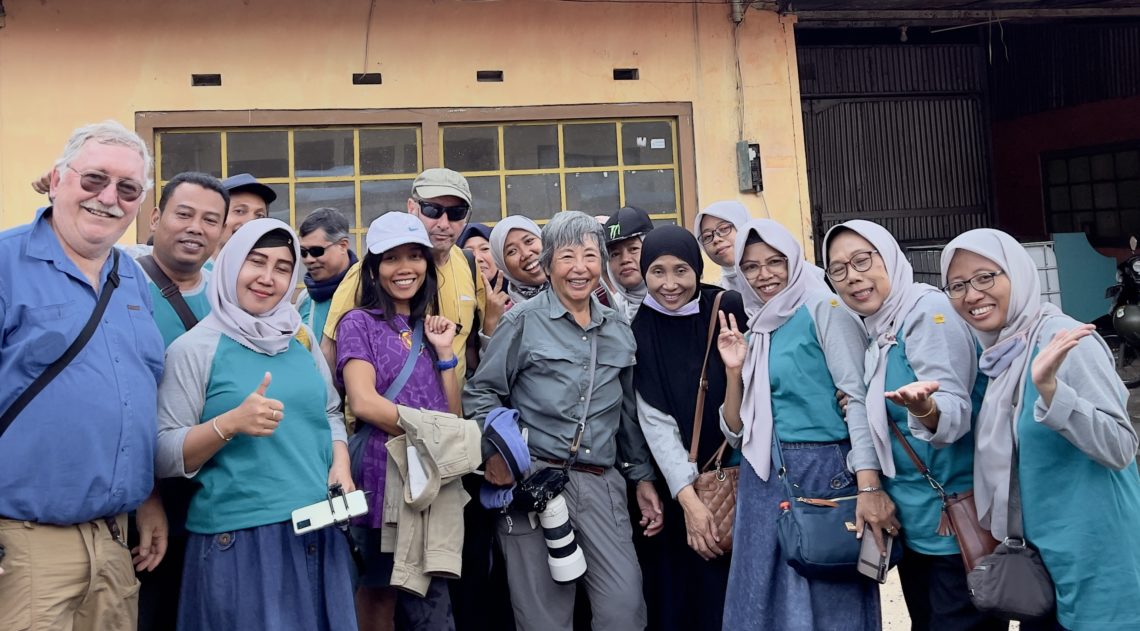
As we were leaving the tea plantation factory, we were approached by a touring group of Indonesian Muslim women who asked for a selfie with us. In general, we always agree to such requests, since we are asking the same of them continually in our quest for photographs of our travels.
